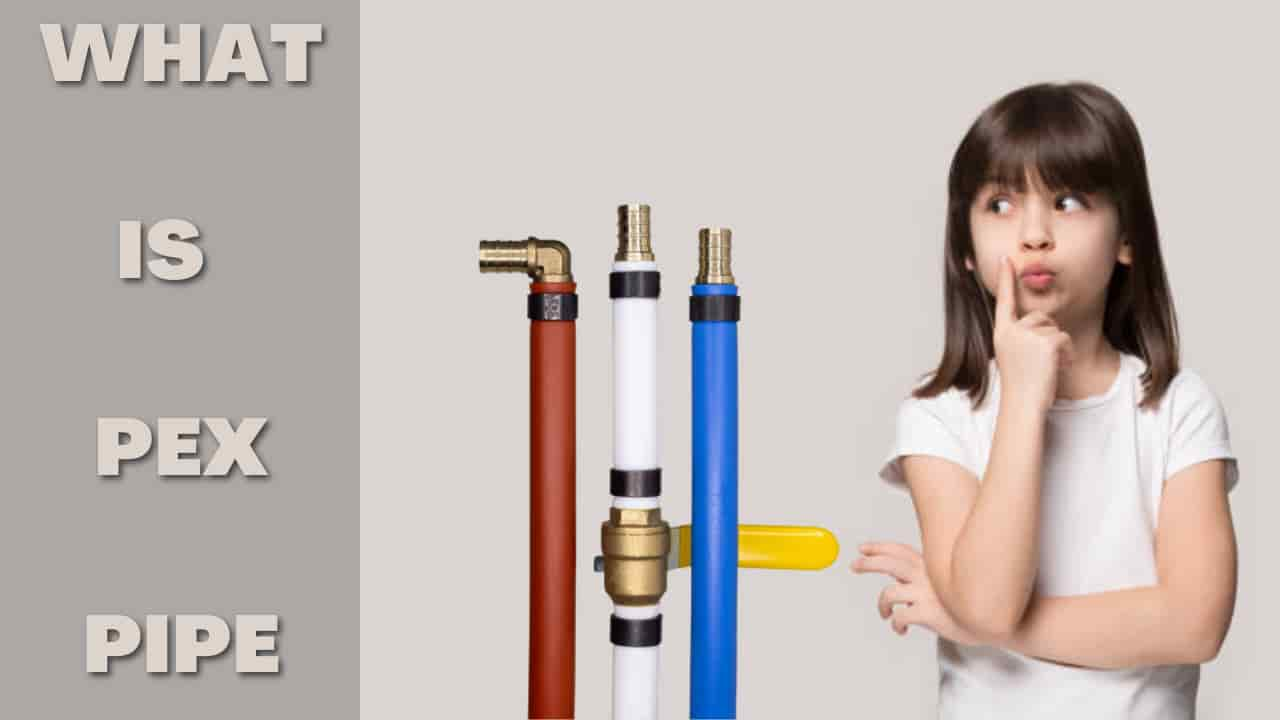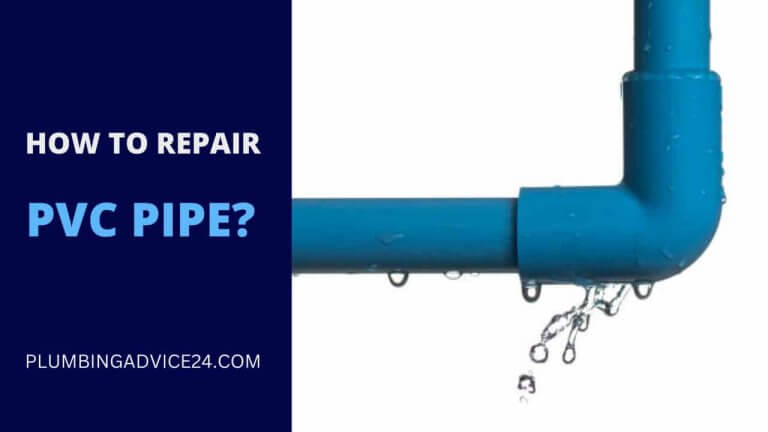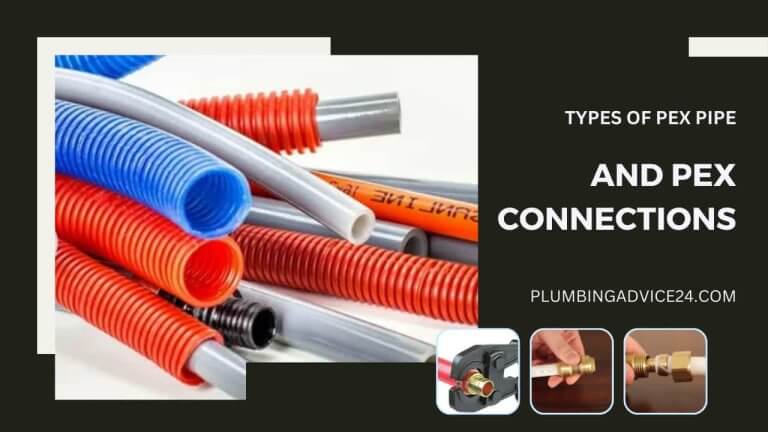PEX Pipes For Plumbing | PEX Pipe Sizes
You may have seen rolls of blue and red pipes in the plumbing wing of your home improvement store, but you may not know what these colored tubings are made of. These rolls are PEX tubing. If you are going to install PEX Pipes, you should get information about it first.
Everything you need to know about PEX will be found in this article, including what PEX Plumbing pipe is, its lifespan, where it can be used, how to measure it, installation cost, and all the advantages and disadvantages of this popular plumbing material.
What Is PEX Pipe?
PEX pipe, or cross-linked polyethylene pipe, is a type of flexible plastic pipe that is relatively more flexible and stronger than other pipes made of plastic.
In the past, plumbing had used galvanized pipes, which had corrosion and many other problems in a galvanized pipe. Galvanized pipes were replaced by copper pipes. Copper pipes were expensive and required welding to work with them. Which made it difficult to work with, and minor repairs required the help of professionals.
Copper pipes were replaced by PVC pipes, which required many joints for bends. Due to this, PEX pipes were developed that were flexible and relieved to install joints in them. The good thing about PEX pipes is that they come back to their original shape even after being crushed or bent.
At present, PEX pipes are used in more than 60% of newly constructed residential water supply lines. These pipes are suitable for both hot and cold water distribution and make long runs without many connections.
Must Read : What Is Plumbing Pipe | 22 Different Types of Plumbing pipes
PEX Pipe Lifespan
PEX tubing was first used in Europe in 1960. These pipes have been serving the United States for the past 30 years. During this time, PEX pipes have been used in most homes, commercial buildings, and industrial buildings and have been tested.
Based on this test, the average lifespan of PEX tubing is estimated to be 40-50 years. The lifespan of PEX plumbing can vary depending on its frequency of use, water temperature, and water quality.
Sunlight and water temperatures can significantly damage the PEX pipe and shorten its lifespan. Most PEX tubing on the market today comes with a 25-year warranty.
What Is PEX Pipe Used For?
PEX is a high-temperature flexible pipe and does not require a fitting connection for long runs. Capable of distributing both hot and cold water. It is widely used in various applications due to its properties like durability, chemical resistance, corrosion resistance, and resistance to slow crack growth.
PEX pipes are used in the following plumbing systems.
1. Water supply lines or potable water service lines.
2. As hot and cold water pipes in residential and commercial spaces.
3. For water distribution in hot water applications, including hydraulic piping and radiators.
4. Radiant heating and cooling systems.
5. Heat transfer applications such as floor cooling and snow melting.
6. In buried applications such as pre-insulated transmission piping.
7. Residential Fire Protection and Fire Sprinkler Systems.
Must Read : What Is Plumbing Pipe Materials | What Is Used to Make Plumbing Pipes
How to Measure PEX Pipe?
The size of PEX pipe is indicated by CTS (size of copper pipe) rather than measured by OD(outer diameter) or ID (inside diameter). The outside diameter of the same size PEX, copper, and CPVC (CTS) pipes is the same. Therefore, all these tubes can be connected to each other.
PEX pipes for homes are usually 3/8 “to 1” in diameter. For adequate water flow, 3/4 ”or 1/2” PEX should be used for the main pipes. It is advisable to use PEX pipes of the same size when replacing old water pipes.
Take a string or measuring tape to measure the PEX pipes, wrap it around the tube, and mark and note the measurements. If the size is around 1.5, you have a 1/2 “tube, and if the size is around 2.5, you have a 3/4” tube.
For more information, you can use the PEX pipe size chart below:
| PEX PIPE SIZE CHART | |||||
| PEX Tubing size CTS/Nominal | Outside Diameter (OD) | Inside Diameter (ID) | Minimum wall thickness | Volume gal/100ft | Weight lbs/100ft |
| 3/8″ | 0.500″ | 0.360″ | 0.070″ | 0.5 | 4.5 |
| 1/2″ | 0.625″ | 0.485″ | 0.070″ | 0.92 | 5.8 |
| 5/8″ | 0.750″ | 0.584″ | 0.083″ | 1.34 | 8.38 |
| 3/4″ | 0.875″ | 0.681″ | 0.097″ | 1.83 | 11 |
| 1″ | 1.125″ | 0.875″ | 0.125″ | 3.03 | 17.06 |
PEX Pipe Installation Cost
The cost of installing PEX pipe ranges from $0.40 to $ 2 per linear foot. Installing PEX pipes for new home plumbing can cost you an estimated $2,280 to $ 5,120.
Reinstalling PEX pipes in a small 1-bathroom home can cost up to $1,500- $ 2,500, and installing it in a large 3-bedroom, 2-bathroom, two-story home can cost from $5,000 to $7,000.
Plumbing a new home using a full PEX pipe for a water supply line can cost approximately $ 5,000- $ 21,000 or more.
Advantages of PEX Pipe
- Pex pipe is approximately 25% cheaper than copper pipe, so installing it as an alternative to copper pipe can save you thousands of dollars.
- Soldering is not required to install PEX, as is required in copper or galvanized pipes.
- PEX pipes are flexible and soft, and easy to cut. Unlike other pipes, PEX pipes do not require a joint, so it is very easy to work with.
- By removing the water hammer noise associated with the metal pipes, the water flows quietly into the PEX pipes.
- PEX pipes are separated by color coding so that the distribution line of hot and cold water flowing through them can be easily identified.
- PEX pipes do not contaminate water as they are corrosion-resistant.
Disadvantages of PEX Pipe
- PEX pipes are very sensitive to UV light. It hardens and can crack within a few months of exposure to UV light. UV light means not only sunlight but also the bulb of your house is UV light. Most manufacturers recommend installing it in a place away from sunlight or in a dark place.
- Chemicals and insects can damage PEX pipes. Mice can easily bite these pipes, causing them pipe to leak and damage the entire pipeline.
- PEX pipes are semi-permeable and incredibly sensitive to bacteria. PEX pipes installed at depths below the ground can allow bacteria to come in contact with moisture and contaminate the water.
- Since it does not melt like other plastics, no method has been developed at the present time to recycle PEX.
What Is Pex Plumbing?
PEX plumbing, or cross-linked polyethylene tubing, is a type of flexible plastic tube that is relatively more flexible and stronger than other pipes made of plastic.
At present, PEX pipes are used in more than 60% of newly constructed residential water supply lines. These pipes are suitable for both hot and cold water distribution and make long runs without many connections.
What Is Pex Pipe Made Of?
PEX (cross-linked polyethylene) is a plastic material made from medium or high-density polyethylene, which has improved properties such as improved heat resistance and long-term strength and durability. Pipes made from these materials are used in hot and cold potable water distribution systems, residential fire sprinkler systems, and hydraulic heating applications.
What Is the Pex Lifespan?
The average PEX lifespan is estimated to be 40-50 years. The lifespan can vary depending on its frequency of use, water temperature, and water quality.
Sunlight and water temperatures can significantly damage the PEX and shorten its lifespan. Most PEX tubing on the market today comes with a 25-year warranty.
How Much Is the Cost to Install PEX Plumbing?
The cost of installing PEX pipe ranges from $0.40 to $ 2 per linear foot. Installing PEX pipes for new home plumbing can cost you an estimated $2,280 to $ 5,120. Plumbing a new home using a full PEX pipe for a water supply line can cost approximately $ 5,000- $ 21,000 or more.
What Are the PEX Plumbing Disadvantages?
The PEX plumbing disadvantages are as follows:
- PEX pipes are very sensitive to UV light. It hardens and can crack within a few months of exposure to UV light. UV light means not only sunlight but also the bulb of your house is UV light. Most manufacturers recommend installing it in a place away from sunlight or in a dark place.
- Chemicals and insects can damage PEX pipes. Mice can easily bite these pipes, causing the pipe to leak and damage the entire pipeline.
- PEX pipes are semi-permeable and incredibly sensitive to bacteria. PEX pipes installed at depths below the ground can allow bacteria to come in contact with moisture and contaminate the water.
- Since it does not melt like other plastics, no method has been developed at the present time to recycle PEX.
If You Liked This Post? So Share It with Your Friends
Suggested Articles:
Different Types of PEX Pipe | How to Make PEX Connections
What Is a PVC Pipe | How to Measure PVC Pipe Size | PVC Pipe Installation Cost













